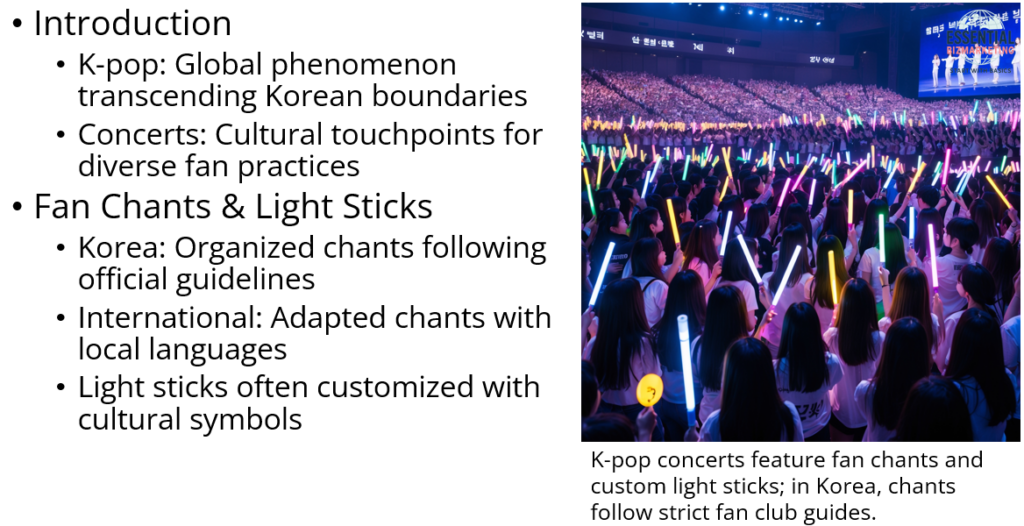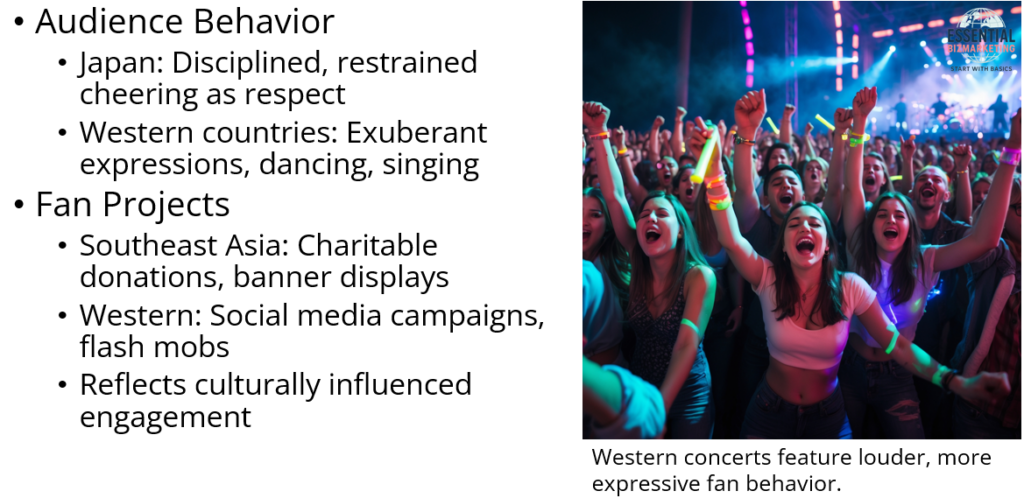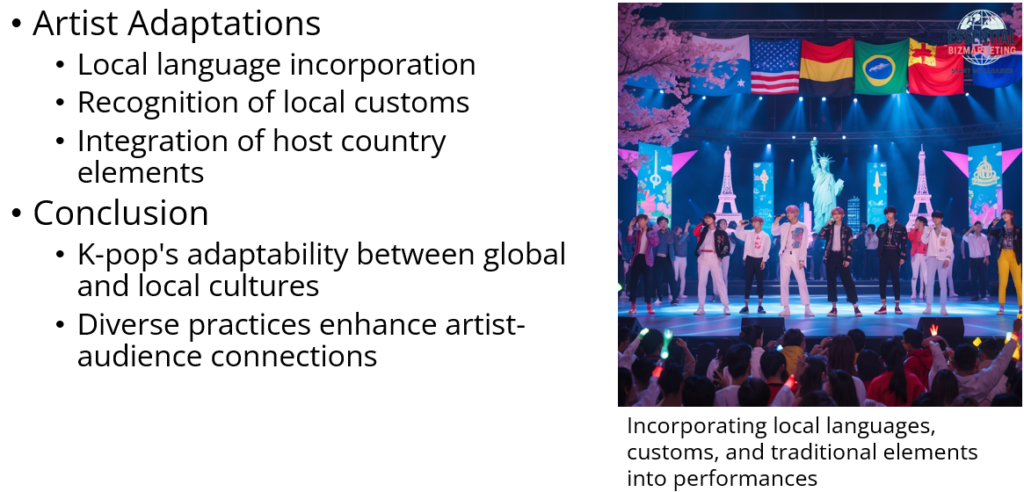The global proliferation of K-pop has led to a diverse array of fan practices at concerts worldwide. These variations are influenced by cultural norms, regional fan behaviors, and localized adaptations of the K-pop phenomenon.

Introduction: The Globalization of K-pop Concerts
K-pop, originating from South Korea, has transcended its national boundaries to become a global phenomenon. As K-pop groups tour internationally, their concerts serve as cultural touchpoints where diverse fan practices emerge. Understanding these cultural variations provides insight into how K-pop is localized and embraced differently across regions.
Fan Chants and Light Sticks: Universal Symbols with Local Flavors
A hallmark of K-pop concerts is the synchronized fan chants and the use of light sticks, known as “fan lights,” which are often customized for each group. While these elements are ubiquitous, their execution varies by region. In South Korea, fan chants are meticulously organized, with fans often following official guidelines provided by fan clubs. Conversely, international fans may adapt these chants, incorporating local languages or personalized cheers, reflecting their unique cultural contexts. The use of light sticks also varies; for instance, fans in certain countries might decorate them with national symbols or colors to showcase their cultural identity alongside their support for the artists.
Audience Participation and Concert Etiquette

Cultural norms significantly influence audience behavior during K-pop concerts. In Japan, for example, fans are known for their disciplined and orderly conduct, often refraining from excessive cheering during performances to show respect. In contrast, concerts in Western countries might feature more exuberant expressions of enthusiasm, such as loud cheering, dancing, and spontaneous singing along. These differences highlight how cultural backgrounds shape the concert-going experience.
Fan Projects and Supportive Gestures
Fan-initiated projects are a common sight at K-pop concerts, but their nature varies globally. In Southeast Asia, fans often organize large-scale events, such as charitable donations in the artist’s name or coordinated banner displays during concerts. In Western countries, fans might focus on social media campaigns or flash mobs to promote concerts and express their support. These activities demonstrate the creative and culturally influenced ways fans engage with K-pop artists.
Cultural Sensitivity and Adaptation by Artists

K-pop artists and their management companies are increasingly attentive to cultural differences, tailoring their performances and interactions to resonate with local audiences. This includes incorporating local languages into performances, acknowledging local customs, and sometimes blending traditional elements of the host country into their shows. Such adaptations not only endear artists to local fans but also exemplify the cultural exchange facilitated by K-pop’s global reach.
Conclusion: The Dynamic Interplay of Global and Local Cultures
The cultural variations observed in K-pop concerts worldwide underscore the genre’s adaptability and the dynamic interplay between global pop culture and local traditions. As K-pop continues to expand its global footprint, these diverse fan practices enrich the concert experience, fostering a deeper connection between artists and their international audiences.
📚 References
Cho, Y. (2020). A study on the cultural-political implications of the overseas acceptance culture of K-pop. Journal of Communication Research, 57(1), 33-63. Retrieved from https://journal.comm.or.kr/xml/30824/30824.pdf
Lee, J. (2018). Analysis of differences in K-pop concert experience factors (4Es) and leisure satisfaction: Focusing on companions and viewing frequency. Korean Journal of Leisure, Recreation & Park, 42(4), 61-74. Retrieved from https://journal.kslrp.net/xml/23620/23620.pdf
Kim, H. (2021). Localization and indigenization of K-pop: A case study of SB19 in the Philippines. Master’s thesis, Seoul National University. Retrieved from https://s-space.snu.ac.kr/bitstream/10371/193950/1/000000176683.pdf
Wikipedia contributors. (n.d.). Impact and popularity of K-pop. Wikipedia. Retrieved March 17, 2025, from https://en.wikipedia.org/wiki/Impact_and_popularity_of_K-pop
📁 Start exploring the Blog
📘 Or learn more About this site
🧵 Or follow along on X (Twitter)
🔎 Looking for sharp perspectives on global trade and markets?
I recommend @GONOGO_Korea as a resource I trust and regularly learn from.
